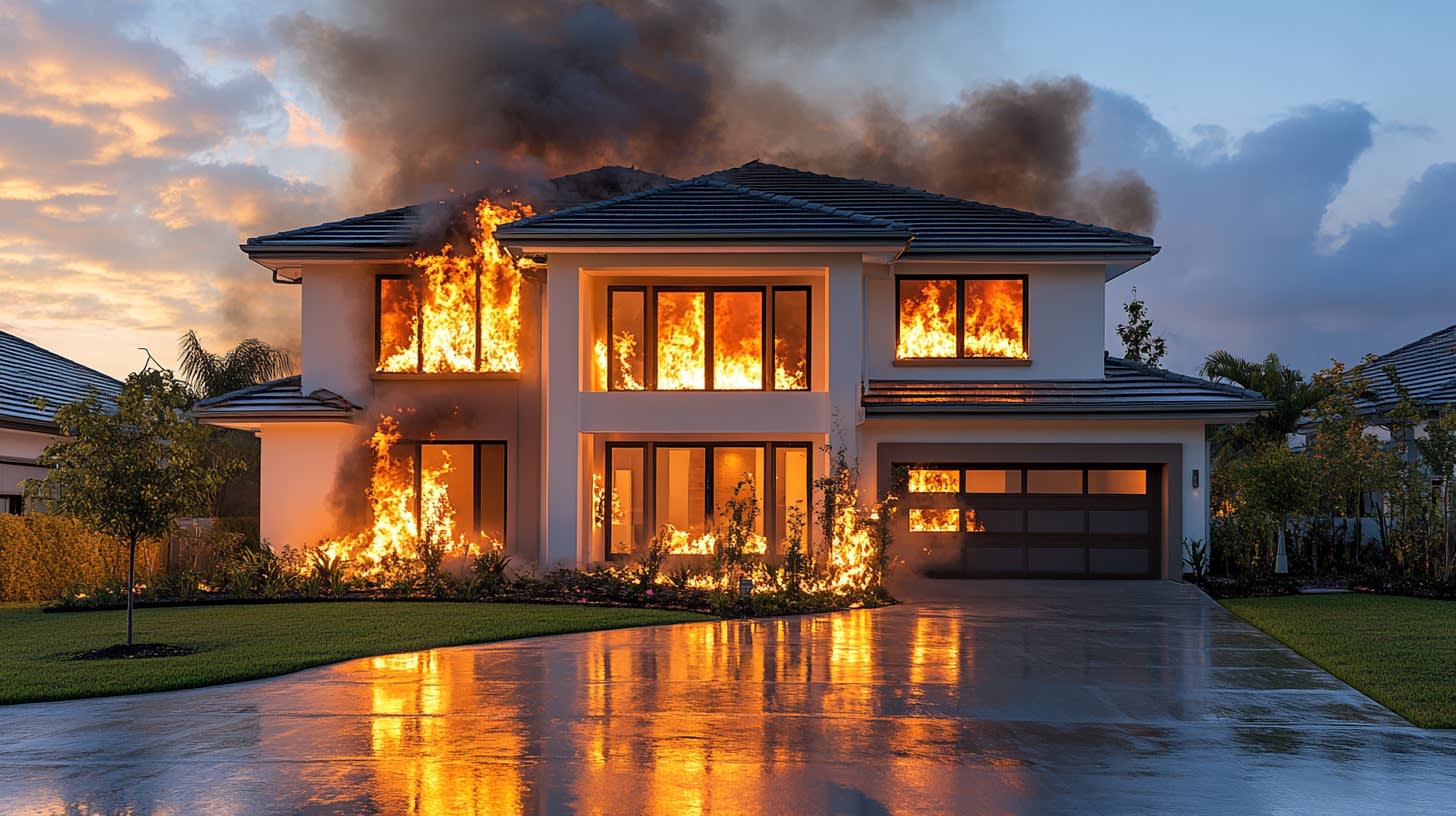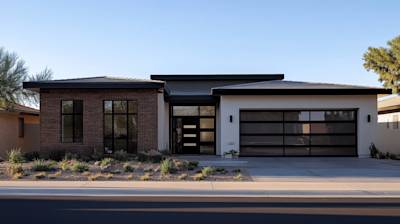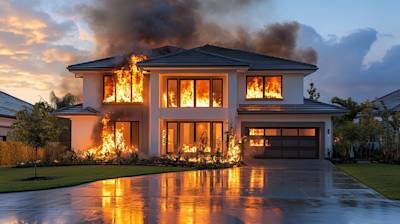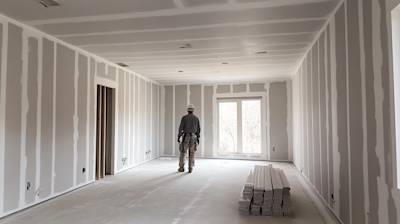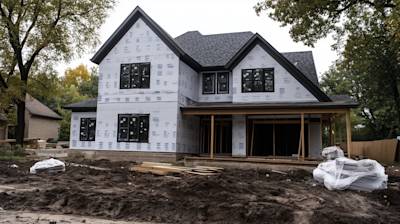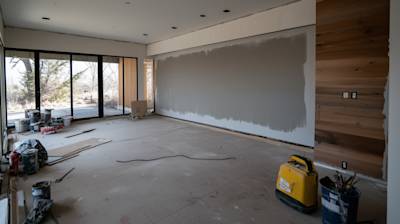The use of stucco as a popular home exterior has been growing in great strides over the years. Homeowners are constantly drawn to stucco due to its stunning visual appeal, unique texture and, perhaps most importantly, its noteworthy fire resistance. But, how fire resistant is stucco truly? This blog post aims to examine the fire resistance properties of stucco in detail.
The Essential Elements of Stucco
Before we delve into the fire resistance features of stucco, it helps to understand the basic components of this widely used building material.
Stucco is a kind of plaster that has traditionally been used both inside and outside homes. It's typically made up of:
- Water
- Sand
- Portland cement
This mixture creates a durable and resilient coating that can be applied to both wood and masonry surfaces.
Stucco and Fire Resistance
How does this seemingly simple substance become one of the most fire-resistant materials on the market? That outcome largely depends on the blending of these fundamental elements.
Statistically, stucco has been recognized as one of the most fire-resistant materials available. In fact, a one-inch layer of stucco can provide up to a one-hour fire resistance rating.
Here's what contributes to its admirable fire resistance:
Composition: Stucco's composition is inorganic which means it does not sustain fire. Materials such as wood or vinyl are organic and, thus, tend to burn quite easily.
Absence of Oxygen: Because stucco is applied as a wet mixture and then dries hard, there's no room for oxygen to flow through it. Oxygen is a necessary component for fire to burn, so when it's eliminated, the risk of fire spreading is significantly reduced.
These factors account for stucco's commendable ability to resist fire.
Understanding Fire Resistance Ratings
Fire resistance is generally measured by a material's fire resistance rating. This rating defines the duration for which a passive fire protection system can withstand a standard fire resistance test.
So, when we say that stucco has a one-hour fire resistance rating, what does it actually mean?
A one-hour fire resistance rating indicates that if a fire were to be ignited, the stucco could resist the fire's spread for up to one hour. This does not mean that the stucco would not be damaged, rather, it implies that the fire would not spread through the stucco to other areas for approximately an hour.
Styrofoam and Stucco Fire Resistance
Modern stucco applications sometimes involve the use of Styrofoam as backing for stucco, forming what's known as an "EIFS" system. The system is composed of:
- Styrofoam
- Mesh
- Base coat
- Finish coat (stucco)
Despite utilizing styrofoam, this system is still fire-resistant to an appreciable extent. The EIFS stucco system is similar to traditional stucco regarding fire resistance, with the same one-hour rating.
Frequently Asked Questions about Is Stucco Fire Resistant
How does stucco resist fire?
Stucco's fire resistance has a lot to do with its components. Made of cement, sand, lime, and water, stucco forms a hard and durable surface when dry. These inorganic materials do not easily ignite, so in the event of a fire, this surface could potentially slow down or prevent the fire's spread.
Is the fire resistance of stucco similar to other building materials?
Stucco's fire resistance is superior to many other popular siding materials. Wood, vinyl, and certain types of foam panels are more susceptible to fire damage than stucco. However, brick and stone also boast high fire resistance comparable to stucco.
Can stucco withstand extreme heat?
Absolutely. Stucco's fire resistance is often equated with its robust resistance to extreme heat. Stucco's particular makeup enables it to withstand severe heat conditions, boosting its overall durability and resilience.
Are all types of stucco fire resistant?
There are numerous types of stucco, but the traditional stucco formula—consisting of cement, sand, lime, and water—offers the most fire resistance. Synthetic stucco, also known as EIFS (Exterior Insulation and Finish System), may not perform as well because it includes foam insulation.
Do layers of stucco affect its fire resistance?
Generally, the more layers of stucco applied, the higher the fire resistance. Standard stucco applications involve two to three coats, creating a thicker barrier that can potentially offer better protection against fire.
Will using stucco help me with insurance rates?
Often, fire-resistant building materials like stucco can result in lower home insurance premiums. Insurers typically consider the presence of such materials when determining policies and rates.
Is stucco's fire resistance affected by paint or finish?
While the type of finish doesn't immensely impact stucco's fire resistance, some paints can influence it. Paints that are also fire-resistant can boost the effectiveness of the stucco, while other paint types may slightly decrease stucco's inherent fire resistance.
Is the fire resistance of stucco certified or verified?
Stucco's fire resistance is generally recognized in the construction industry, and there are specific tests that can measure and verify it. One common one is the ASTM E84 test, which rates surface burning characteristics of building materials.
Does stucco's fire resistance add to property value?
Stucco, thanks to its fire resistance and other impressive properties such as durability and attractiveness, can add to property value. Homeowners and builders frequently recognize it as an asset when assessing a property's worth.
Are there regulations requiring stucco use for its fire resistance property?
There are no universal regulations mandating the use of stucco strictly because of its fire resistance. However, in areas prone to wildfires, local codes may favor or even require the use of fire-resistant materials, including stucco. It’s always good to check with local building officials for specifics.
Pros of Stucco's Fire Resistance
High Fire Resistant Rating
Stucco has a one-hour fire resistance rating. This means that if there is a fire, stucco can resist the fire for an hour before it gets damaged. This significant fire-resistance rating provides homeowners with more time to evacuate the building and gives firefighters improved chances of containing the blaze before it harms the structure.
Excellent Insulator against Heat
Stucco is a great insulator against heat. It can effectively resist the transfer of heat due to its in-built thermal properties. This quality makes it an ideal choice for homes in areas prone to wildfires, as it assists in protecting the main structure of a house from severe fire heat.
Contains No Combustible Components
Unlike wood siding or other materials, stucco contains no combustible components. This lack of combustible components makes stucco safer in the event of a fire. No fuel means no flame spread, thereby potentially saving the structure and lives from potential fire hazards.
Allows for Fire-Resistant Designs
In addition to being a fire-resistant material, its versatility also allows for creating more fire-resistant designs. Walls and surfaces finished in stucco can have rounded corners, fewer joints, and edge details that can resist crumbles under fire conditions more effectively than conventional materials.
Increases Property Value
Stucco, with its fire-resistant abilities, can increase the property value of a home. House buyers who are concerned about fire safety will appreciate the use of stucco, given its high fire-resistance rating. This factor could make a home more desirable, potentially leading to quicker sales and higher sale prices.
Cons of Stucco's Fire Resistance
Not Completely Fireproof
While stucco is highly fire resistant, it is not completely fireproof. If exposed to intense heat or flames for extended periods, stucco will eventually be compromised and fail. The one-hour fire resistance rating means that it can resist fire for up to an hour – not indefinitely.
Damage and Maintenance
Over time, stucco can develop cracks due to weather effects or shifting house foundations, compromising its fire resistance. Regular inspections and maintenance are needed to ensure these cracks are promptly addressed to maintain stucco's fire resistance capability.
Differences in Stucco Application
A poorly applied stucco finish may have a lower fire-resistance. Thus, it's important to hire a skilled contractor to ensure the stucco is applied correctly and in the thick enough layers necessary to provide maximum fire resistance.
Insulation Considerations
While stucco offers excellent insulative properties from heat, it can also be a con in terms of energy efficiency. The high level of heat resistance can potentially make a home less efficient in terms of heating and cooling. Consequently, this could result in higher utility bills, especially in regions with extreme weather conditions.
Cost
While a stucco finish can contribute to fire resistance, it is also more expensive than other less fire-resistant material options available in the market. It is crucial to weigh the cost-benefit and decide if the extra investment for the fire-resistant benefits outweighs the initial cost.
Limited to Rigid Substrate
Stucco needs a rigid substrate to be applied to, limiting its use to mostly masonry and concrete, where the material can adhere correctly. If applied to flexible surfaces, the shifting and movement may cause cracks in the stucco, undermining its fire-resistance properties. Hence, this limits the application of stucco in specific structures.
Summary
There's no doubting just how versatile stucco is. It's practical, visually appealing, and notably, it's also fire resistant. Tests have shown that when flames are exposed to a stucco-covered surface, they simply don't spread. This is because stucco's composition includes cement, sand, and lime, all of which are innately resistant to fire. Not only does this increase the safety of buildings clad in stucco, but it also offers peace of mind to the occupants within.
On top of being pretty durable, stucco offers an extra layer of protection from potential fires. So, if anyone ever asks, "Is stucco fire resistant?" The answer is a definite yes. It proves to have a one-hour fire rating, which means it can resist a fire for at least one hour before any structural damage occurs. This delay gives individuals more time to escape from buildings during a fire and potentially diminishes property damage.
To sum it all up, stucco truly stands out for its functionality, aesthetics and fire resisting abilities. It's clearly a winner for those looking for a reliable, multi-purpose solution for their construction needs. Now, you know it's not just about how stucco looks on your exterior - but also the protective value it carries. So, don't hesitate to choose stucco as a fire-resistant solution for your home or workplace.
About Atlas Stucco
Welcome to Atlas Stucco, straight from the heart of Sacramento, CA! We're an exceptional squad of professionals who take stucco and plastering to a totally new level. Ever since Atlas Stucco started out, we've been all about top-grade workmanship, unmatched customer service, and a whole lot of stucco excitement. Seriously, who knew stucco could be so cool? So whether you're looking to repair, restore, or rethink your property's exterior, lean on us for all your stucco needs. Sacramento is our home, stucco is our art, and we can't wait to give your space the 'wow' factor it deserves!
Tags: stucco, fire resistant, building materials,


